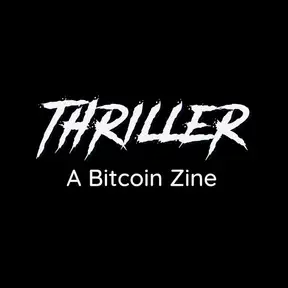Thriller Insider: Fed Effect on Bitcoin
Download MP3The last three or four decades have seen a remarkable evolution in the institutions that comprise the modern monetary system. The financial crisis of 2007-2009 is a wakeup call that we need a similar evolution in the analytical apparatus and theories that we use to understand that system. Three features of the new system are central. Most important, the intertwining of previously separate capital markets and money markets has produced a system with new dynamics as well as new vulnerabilities. The financial crisis revealed those vulnerabilities for all to see.
New York Fed President John Williams, among others, has made the case that the Fed has limited medicine in the medicine cabinet to aid the economy and that it’s better to administer the pills at the first signs of trouble rather than waiting for full-blown illness when there might not be enough medicine left to make a difference. Interest rates are very low by historical standards. For example, the benchmark rate was over 5 percent before the Fed started reducing it in 2007. Now the benchmark rate is half that amount, meaning there will be less stimulus this time around from cutting rates.
America enjoys a unique position of power over the world’s financial system thanks to the supremacy of the US dollar. But several of the nation’s adversaries appear to think they’ve found a clever way around this decades-old setup: cryptocurrency. This is because an interest rate cut reduces the yield on a currency. Further, the liquidity added to the economy via rate cuts often leads to inflation and loss of purchasing power of the currency. Put simply, falling interest rates mean fewer reasons to hold U.S. dollars, as pointed out by Alan Silbert, executive managing director at INX Trading Platform. Silbert believes the Fed will deliver more rate cuts in the near future.
The Fed has cut rates less than 12 months away from bitcoin’s mining reward halving – a process aimed at curbing inflation by reducing reward for mining on the blockchain by 50 percent every four years. Essentially, BTC’s monetary policy is on a preset path – its supply is halved every four years. The monetary policy divergence would widen further if the Fed embarks on a full-blown easing cycle, as anticipated by Silbert. That would further strengthen bitcoin’s appeal as store of value and may bolster the bull market.
Sources: Travis Kling, Perry G Mehrling
https://www.coursera.org/learn/money-banking
New York Fed President John Williams, among others, has made the case that the Fed has limited medicine in the medicine cabinet to aid the economy and that it’s better to administer the pills at the first signs of trouble rather than waiting for full-blown illness when there might not be enough medicine left to make a difference. Interest rates are very low by historical standards. For example, the benchmark rate was over 5 percent before the Fed started reducing it in 2007. Now the benchmark rate is half that amount, meaning there will be less stimulus this time around from cutting rates.
America enjoys a unique position of power over the world’s financial system thanks to the supremacy of the US dollar. But several of the nation’s adversaries appear to think they’ve found a clever way around this decades-old setup: cryptocurrency. This is because an interest rate cut reduces the yield on a currency. Further, the liquidity added to the economy via rate cuts often leads to inflation and loss of purchasing power of the currency. Put simply, falling interest rates mean fewer reasons to hold U.S. dollars, as pointed out by Alan Silbert, executive managing director at INX Trading Platform. Silbert believes the Fed will deliver more rate cuts in the near future.
The Fed has cut rates less than 12 months away from bitcoin’s mining reward halving – a process aimed at curbing inflation by reducing reward for mining on the blockchain by 50 percent every four years. Essentially, BTC’s monetary policy is on a preset path – its supply is halved every four years. The monetary policy divergence would widen further if the Fed embarks on a full-blown easing cycle, as anticipated by Silbert. That would further strengthen bitcoin’s appeal as store of value and may bolster the bull market.
Sources: Travis Kling, Perry G Mehrling
https://www.coursera.org/learn/money-banking

